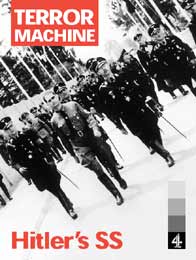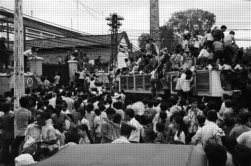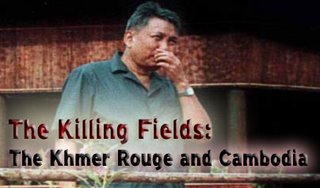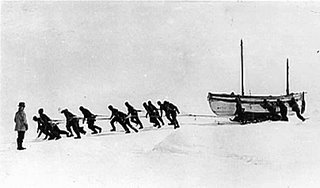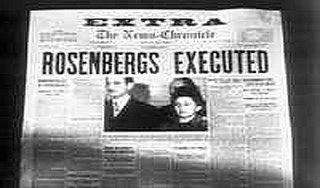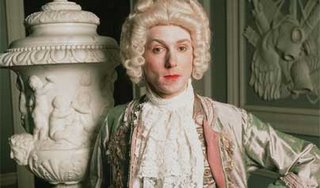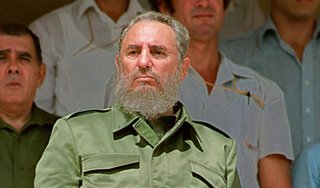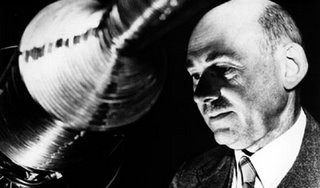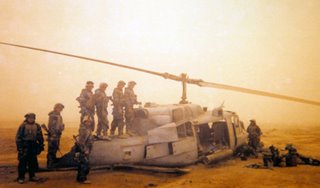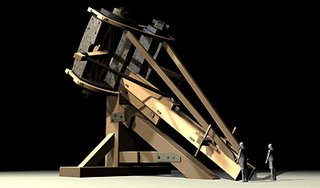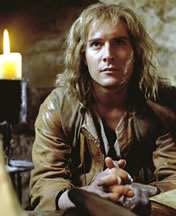
The great pretender
In 1491, a young man appeared in the courts of Europe with an explosive claim – that he was none other than Richard, duke of York, the younger of the two ‘princes in the Tower’. He had survived, escaped to Europe and gone into hiding. Now he emerged to claim his rightful place on the English throne. That young man later became known as Perkin Warbeck.
The princes in the Tower
The story begins much earlier, with one of the great mysteries of British history – the disappearance in sinister circumstances of two young boys. The 12-year-old prince of Wales was staying at Ludlow Castle in Shropshire when, on 9 April 1483, news came of his father's sudden death and the boy became king as Edward V. His father's brother – Richard, duke of Gloucester – immediately assumed the regency as ‘protector of the realm’ until Edward came of age, and also took on the care of the latter’s younger brother, the 10-year-old Richard, duke of York.
However, the new regime began quite sinisterly. Gloucester intercepted Edward’s entourage as it travelled to London, killed the young king’s supporters, and escorted him to London and then to the Tower. There, on 16 June, he was joined by his brother Prince Richard.
On 25 June, Parliament declared the two boys illegitimate. A priest, Robert Stillington, had presented evidence that Edward IV contracted to marry Lady Eleanor Talbot before marrying Elizabeth Woodville, which made his marriage to Elizabeth, the boys’ mother, invalid. At Parliament’s invitation, Gloucester took the throne as Richard III. His other brothers, Edmund and George, duke of Clarence, had both died before Edward IV, leaving Gloucester next in line for the throne.
The two boys were last seen playing in the grounds of the Tower at around the time their uncle had them declared illegitimate. It has been presumed that they were murdered on his orders, but to this day, five centuries later, nobody knows for sure.
Enter Richard Plantagenet
Eight years later, in 1491, the apprentice of Pregent Meno, a Breton merchant, arrived in the city of Cork in Ireland, modelling the silks that his master was selling. The locals first insisted that the good-looking 17-year-old with the princely manner must be Edward, the earl of Warwick, son of the duke of Clarence.
The young man denied that he was Warwick, claiming instead to be Richard Plantagenet, duke of York, the younger of the two princes that Richard III was believed to have slain. He then told how he had been spirited out of the Tower after his brother had been murdered and hidden on the Continent – a story plausible enough to be accepted by those who wanted to believe it. (The new pretender also reportedly resembled Edward IV, which led to speculation that he could have been Edward's illegitimate son.) The Cork townsfolk managed to persuade him to embark on a conspiracy against Henry VII, who had defeated Richard III at Bosworth Field in 1485.
Lambert Simnel
This was not the first time that a Richard of York had seemingly risen from the dead. In 1487, the 10-year-old Lambert Simnel had (under the direction of the priest Roger Simon) impersonated, first, Richard of York and then Edward, earl of Warwick, son of the duke of Clarence. However, the latter was actually still alive and living in the Tower. Henry VII ordered that the real Edward be paraded through London, thus showing Simnel to be the impostor he was.
However, despite the fact that there had been a rising against the king on Simnel’s behalf and the boy had actually been crowned in Ireland as ‘Edward VI’, Henry pardoned him, recognising that he had been simply a puppet. Simnel was employed by the king – first, as a servant in the royal kitchen, then as a royal falconer – for the rest of his life.
Support in Europe
It is hardly surprising that, when the new ‘Richard’ was ‘recognised’ in Cork, his welcome in Ireland was less than that given to Simnel. He began a long migration around the courts of Europe in search of support.
Although ignored by Isabella of Spain, he was received as Richard of York by Charles VIII of France – then at war with Henry VII – who gave him a guard of honour. However, when the conflict ended, Charles had to ask the pretender to leave.
‘Richard’ then travelled to Malines (now Mechlin, Belgium) where he was taken in by the woman who would become his most important supporter: the formidable Margaret, Edward IV’s exiled sister, widow of Charles the Bold, duke of Burgundy. Anxious to rid the throne of the hated Henry VII and return the House of York to power, she acknowledged him as her nephew, declaring that his detailed recollections of life at the English court and birthmarks on his body were proof of his true origins. In return, ‘Richard’ promised that all the lands she had lost in England would be restored to her once he gained the throne.
Her support for the potential usurper did not go unremarked by Henry. He sent protests to Philip of Austria, under whose protection Margaret operated, but the 15-year-old archduke said that she could do as she liked on her own lands. In 1493, ‘Richard’ also attended the funeral of Holy Roman Emperor Frederick III at the invitation of the former’s son Maximilian I.
The enemies within
It wasn't just foreign support that Henry Tudor had to fear; the pretender attracted followers in England, too. Henry VII's chamberlain Sir William Stanley said that, if the young man was really the prince, he would not fight against him (thus demonstrating that some Yorkists had not given up hope of the princes being still alive). Sir Robert Clifford had witnessed the compact made between ‘Richard’ and Margaret in 1494 and almost immediately informed Henry of it, as well as of Stanley’s supposed duplicity. Stanley was arrested and executed even though there was no proof that he was involved in any conspiracy with the pretender.
This reaction is perhaps understandable, if not forgivable. England had barely recovered from the deep wounds inflicted by the Wars of the Roses – the vicious feud between the Houses of York and Lancaster as to who should rule England. Henry Tudor may have defeated Richard III on Bosworth Field, but his vow to bring peace to the country with a rule of iron was neither easily achieved nor popular. Deep divisions remained in the country, and the House of York was down but not defeated. Disaffected Yorkists now rallied round ‘Richard’ and threatened the Tudor dynasty before it had even started.
Moreover, the young man’s appeal went beyond those who stood to gain politically from his success. All those who had lamented the shedding of the innocent blood of the princes now dared to hope that one of them had been spared, risen like a King Arthur to save them from harsh Tudor rule. There had been pretenders before, of course, but none so plausible and charismatic. To his detractors, this was all that ‘Richard’ amounted to – a pretender, albeit a superlative one.
Henry pressed his extensive spy network into action to find evidence of a conspiracy among his enemies to restore the House of York – with this ‘puppet prince’, whom he dismissively called ‘the garçon’, at the centre.
First ‘invasion’
‘Richard’ made his first attempt to invade England with the help of both Margaret of Burgundy and Maximilian I, who fitted out the expedition. The latter bragged to the Venetian ambassador that the ‘duke of York’, as he called him, would very soon conquer England and then would turn against the king of France.
The pretender’s small force landed near Deal in Kent on 3 July 1495, hoping for a show of popular support. However, despite the fact that Henry had still not succeeded in securely establishing his authority over England, the ‘invasion’ was routed and 150 of the pretender’s troops were killed.
‘Richard’ abandoned the venture without even disembarking and made for Ireland. There, with the support of the earl of Desmond, he besieged Waterford, but when the town resisted, just as it had against Lambert Simnel, he was again forced to withdraw, this time to Scotland.
At the Scottish court
High and mighty king, your grace, and these your nobles here present may be pleased benignly to bow your ears to hear the tragedy of a young man that by right ought to hold in his hand the ball of a kingdom, but by fortune is made himself a ball, tossed from misery to misery and from place to place.
Perkin Warbeck to James IV of Scotland, according to Francis Bacon in his biography Henry VII (1638)
‘Richard’ was well received in Scotland, and proceeded to exploit the natural antipathy between the Scottish and the English to mount a strategy for Henry’s overthrow. He also married (in what appears to have been a love match) Lady Katharine Gordon – grand-daughter of the earl of Caithness and a cousin of the king James IV – and was granted a monthly pension of £112, an indication that James accepted his claim to the English throne.
The Scottish invasion in support of the pretender in September 1496 was a fiasco. Some 1,400 men of various nationalities crossed into England, but it simply resembled a typical border raid, with ravaging, burning and killing. No public backing for ‘Richard’ materialised in Northumberland, and after three days, the Scots withdrew without even meeting the English in battle. The episode simply gave Henry an excuse to raise taxes for defence. As for ‘Richard’, he begged James to be more merciful to ‘his’ subjects, sick of the cruelty and the devastation carried out by his ally.
Now an embarrassment to the Scottish king, in July 1497 ‘Richard’ embarked with his wife from Ayr, to Ireland once more. Landing at Cork, he discovered that he had lost his supporters there, and soon realised that he had to leave or risk being taken prisoner. A rebellion in Cornwall two months earlier against Henry’s tax increases had encouraged the young man to expect support there, so that’s where he and Katharine now sailed.
‘Richard IV’
On 12 September, ‘Richard’ arrived near Land's End with just 120 men in two ships. This final invasion was by far his most successful – enticed by a proclamation that he would put a stop to the extortionate taxes, his force had grown to 3,000 by the time it reached Exeter. Led by a council that included a debt-ridden textile merchant, a tailor and a scrivener (scribe), his supporters declared him ‘Richard IV’ on Bodmin Moor. They, however, were unarmed, and when Exeter resisted, the rebels were forced to move on. When Henry's army reached them, the pretender realised that there was no hope and fled for the coast. He took refuge in Beaulieu Abbey in Hampshire, where he surrendered.
The leaders of the pretender’s forces were hanged and the rest of his followers were fined heavily: in Somerset, Dorset, Wiltshire and Hampshire – counties not seriously involved in the rebellion – the fines totalled an enormous £13,000. ‘Richard’ himself was imprisoned – first, at Taunton in Somerset, then in London, where he was ‘paraded through the streets on horseback amid much hooting and derision of the citizens’.
Henry sent for Lady Katharine, whom the pretender had left at St Michael’s Mount in Cornwall. Received with all the deference due to her rank, she refused to abandon her husband. Henry told her: ‘Most noble lady, I grieve too, and it pains me very much, second only to the slaughter of so many of my subjects, that you have been deceived by such a sorry fellow.’ Katharine became the companion of the queen, and was given an allowance, which she continued to receive even after Henry’s death.
Escape, the Tower and execution
Surprisingly, Henry treated ‘Richard’ more like a royal guest than a prisoner at Westminster. In June 1498, exploiting Henry's hospitality, the pretender escaped, but was recaptured within hours after he had taken sanctuary at the priory of Sheen (in what is now south London). The prior begged the king to spare the escapee’s life, a wish that was granted. However, ‘Richard’ was put into stocks and exhibited – first, at Westminster, then at Cheapside – and was finally (and ironically) consigned to the Tower, from which he had supposedly been rescued as a child.
Early in 1499, yet another false Warwick appeared as a pretender to the throne. Although the plot was quickly suppressed, it may have convinced the king that it would be wise to dispose of the real Edward, earl of Warwick, as well as the other, longer-lived impostor.
‘Richard’ and Warwick were placed in neighbouring cells, and one of the former’s erstwhile supporters was appointed gaoler. The two young men (Edward was just 24 and ‘Richard’ only about a year older) began to talk and, it was said, to plan. An informer gave away their plot: to burn down the Tower, escape to Flanders and place Warwick on the throne.
The false pretender and the true pretender along with several others, including the gaoler, were found guilty of treason. On 23 November, the supposed commoner ‘Richard’ was drawn on a hurdle from the Tower to Tyburn, where he read out a ‘confession’ and was hanged. His co-conspirator Edward, the last Plantagenet, was beheaded on Tower Hill six days later.
The tale of Perkin Warbeck
Henry's problem was that he could not prove that ‘Richard’ was not the prince – he had no dead body that he could produce to expose the lie. So he had to try to prove that the young man was actually somebody else. He sent his spies to the Continent to try to find the truth, and in the end, he came up with the story of Perkin Warbeck.
Henry had learned about this quite early on – as early as July 1493, according to the historian James Gairdner – but did nothing with it until he captured Perkin in 1497. At Taunton on 5 October, Henry himself managed to get the pretender to ‘confess’ that he was actually the Flemish boatman's son Perkin Warbeck (or Pierquin Wesbecque or Piers Osbeck) of Tournai, born in about 1474. According to the confession, he had made his way to Portugal where, perhaps with the help of powerful individuals, he was transformed into Richard of York.
How this could have happened is still in dispute. In his 1638 biography of Henry VII, Francis Bacon wrote:
[Margaret of Burgundy] informed him of all the circumstances and particulars that concerned the person of Richard, duke of York, which he was to act; describing unto him the personages, lineaments, and features of the king and queen, his pretended parents, and of his brother and sisters and divers others that were nearest him in childhood, together with all passages, some secret, some common that were fit for a child's memory, until the death of King Edward. Then she added the particulars of the time from the king's death until he and his brother were committed to the Tower, as well during the time he was abroad as while he was in sanctuary.
However, according to historian James Gairdner in 1899, ‘he had not, as commonly supposed, received an elaborate training from Margaret … for he had (im)personated the second son of Edward IV long before he visited her court.’
‘Victim of his own deceit’?
Although the original document has disappeared, copies of Perkin Warbeck’s confession were distributed all around Europe. Their real purpose? To establish Henry's own right of succession, which remained quite shaky. If Perkin's story was not true, it had to seem so, and Perkin's confession on the scaffold was all that Henry needed.
Both Polydore Vergil (writing in the 1530s) and Francis Bacon (published a century later) suggest that, by this stage, the pretender had played the role for so long that he scarcely knew what was true. Vergil, Henry's historian, wrote that ‘having twisted falsehood into truth and truth into falsehood, [Warbeck] fell at last from the scaffold, a victim of his own deceit.’ Francis Bacon summed up Warbeck's life: ‘What he feigned, he believed.’
Later writers looked back on the story of Perkin Warbeck with surprising sympathy. In 1634, the playwright John Ford, writing under a Stuart monarch, resurrected the pretender as a tragic hero in The Chronicle Historie of Perkin Warbeck. And in The Fortunes of Perkin Warbeck: A romance, published in 1830, Mary Shelley treated him generously.
When the man we know as Perkin Warbeck was proclaiming himself the rightful heir to the throne, England was exhausted by war and weary of dynastic struggles. Henry VII offered peace and prosperity. However, many in England and, especially, abroad were prepared to keep up the pretence of a living Richard, duke of York, even if they knew the truth. Abroad the pretender was certainly taken seriously and quite a few people believed that there was a chance that he was who he said he was. On balance, it is likely that he was an impostor, but there is no final proof one way or the other.
 May 1941: Britain had no allies in mainland Europe. It would be another six months before the USA joined the forces fighting Hitler's Germany. America was however sending vital supplies, without which, the war would be lost. All those supplies came by ship across the Atlantic.
May 1941: Britain had no allies in mainland Europe. It would be another six months before the USA joined the forces fighting Hitler's Germany. America was however sending vital supplies, without which, the war would be lost. All those supplies came by ship across the Atlantic.
